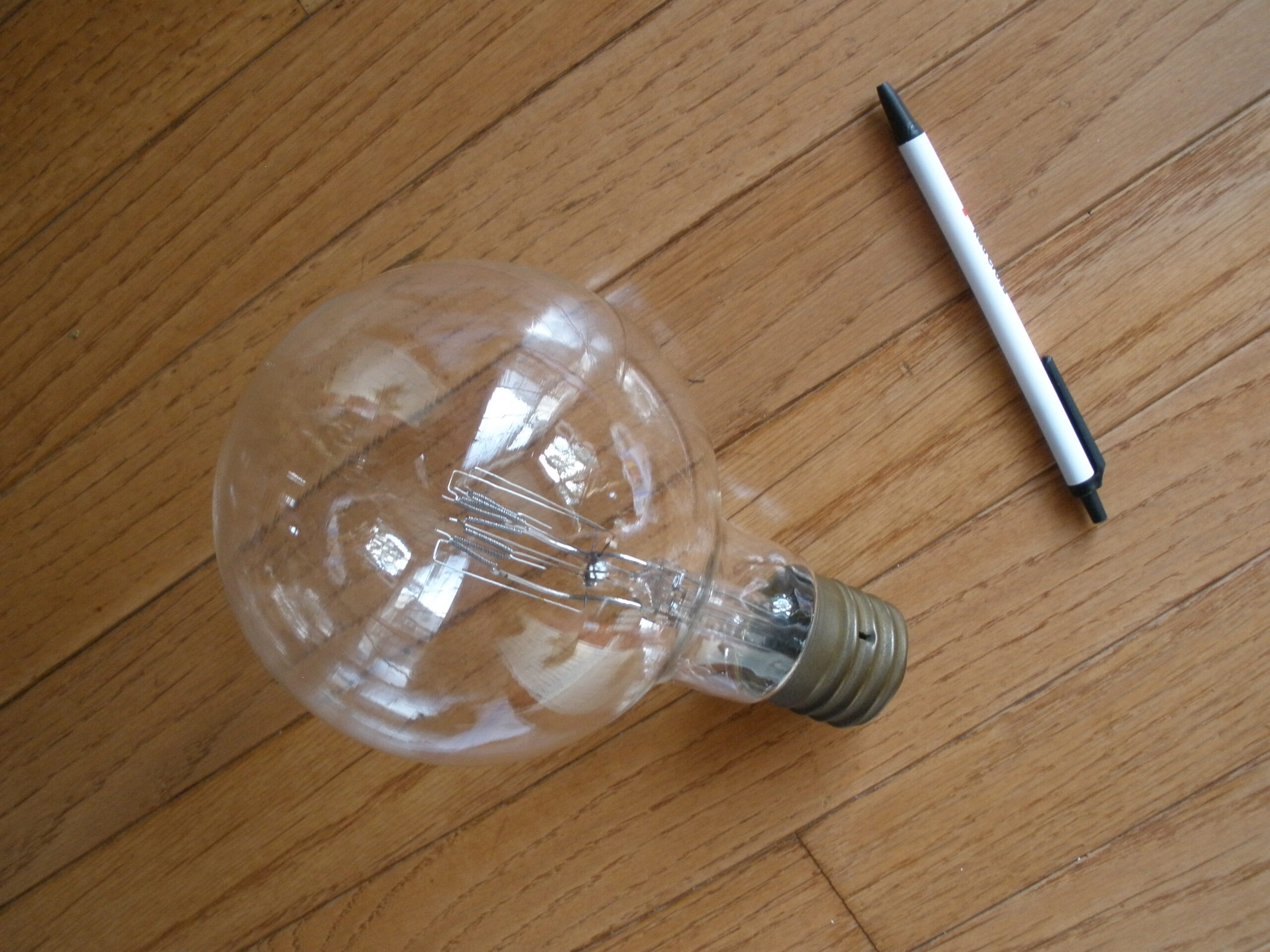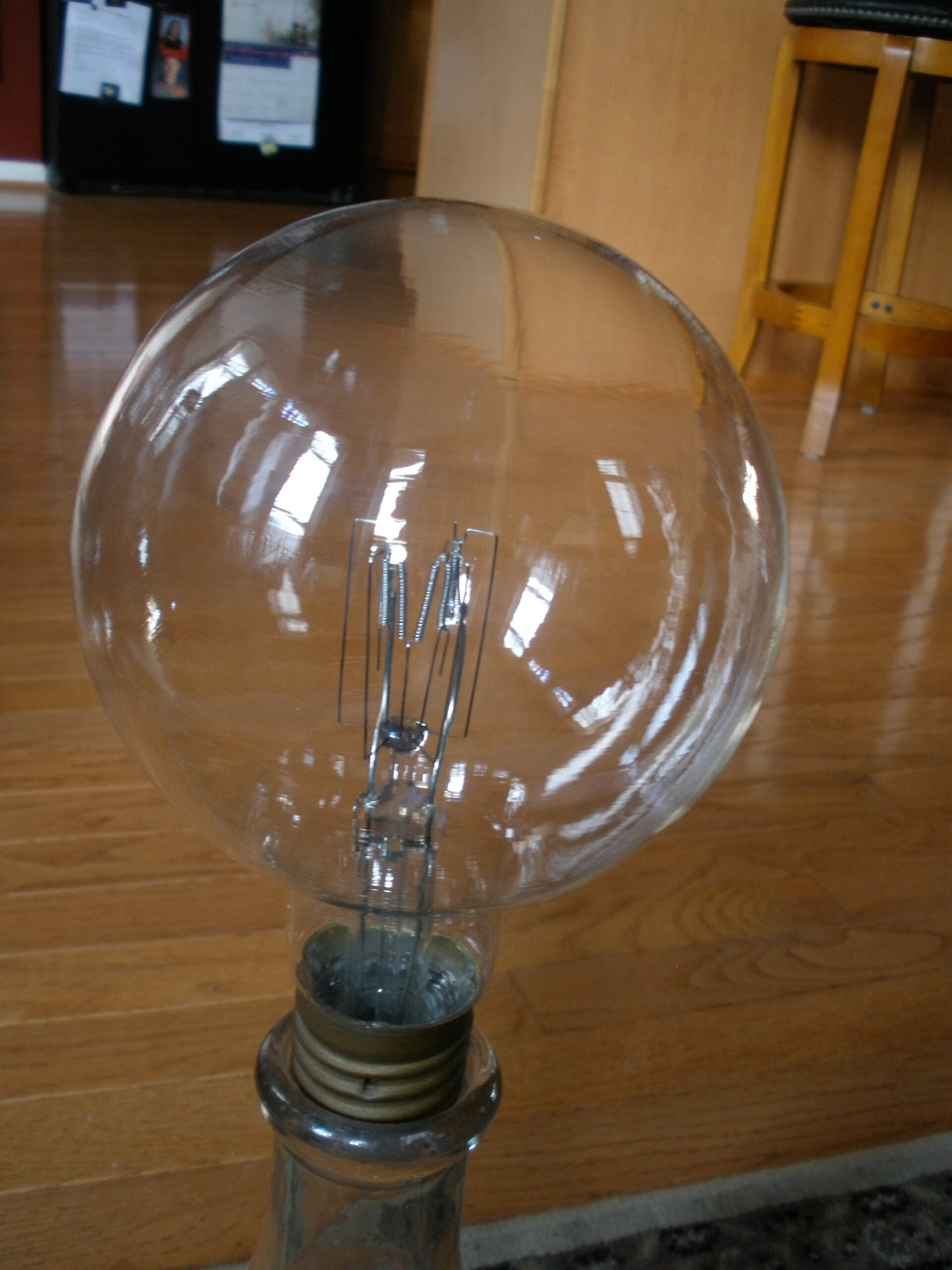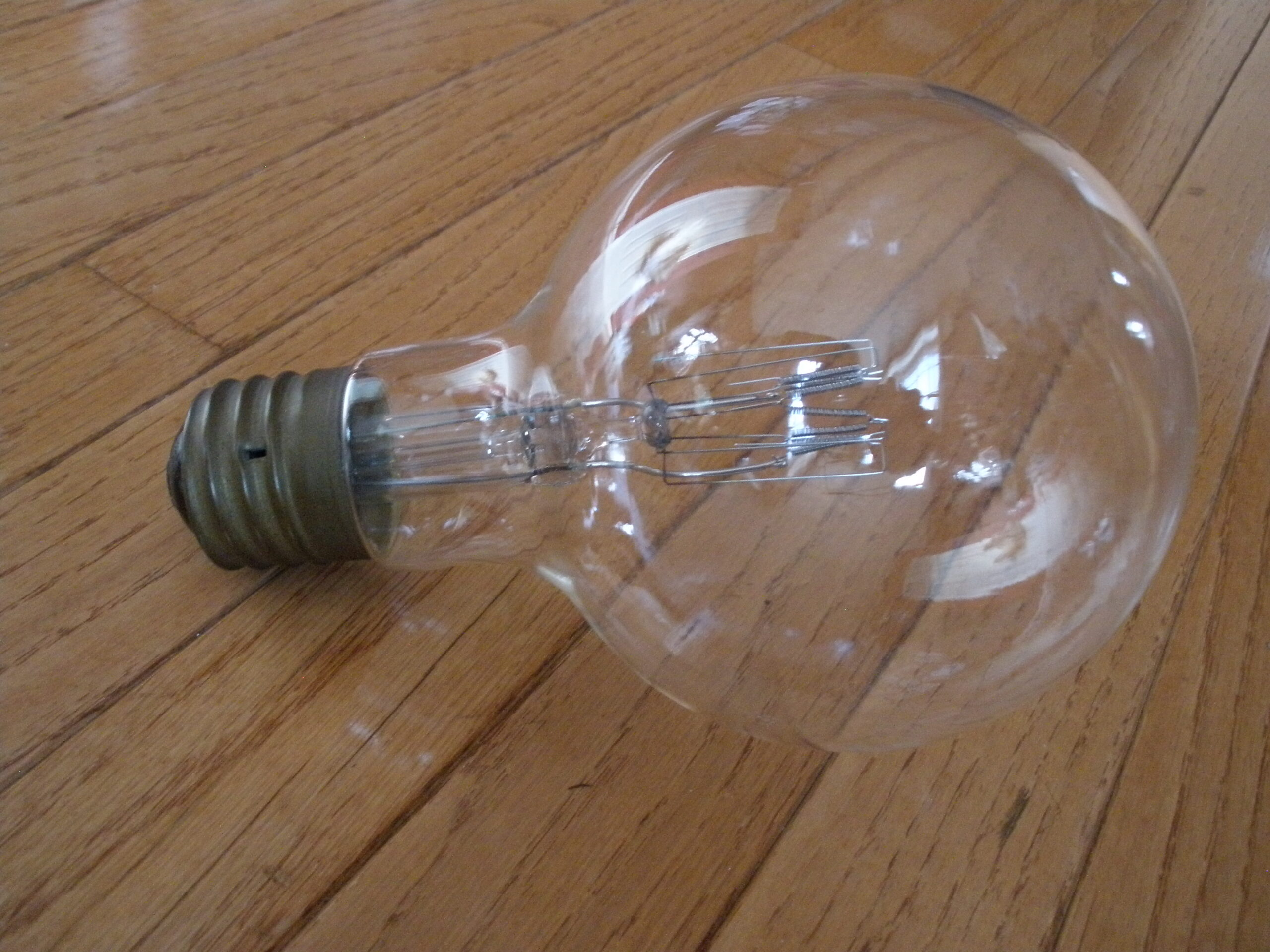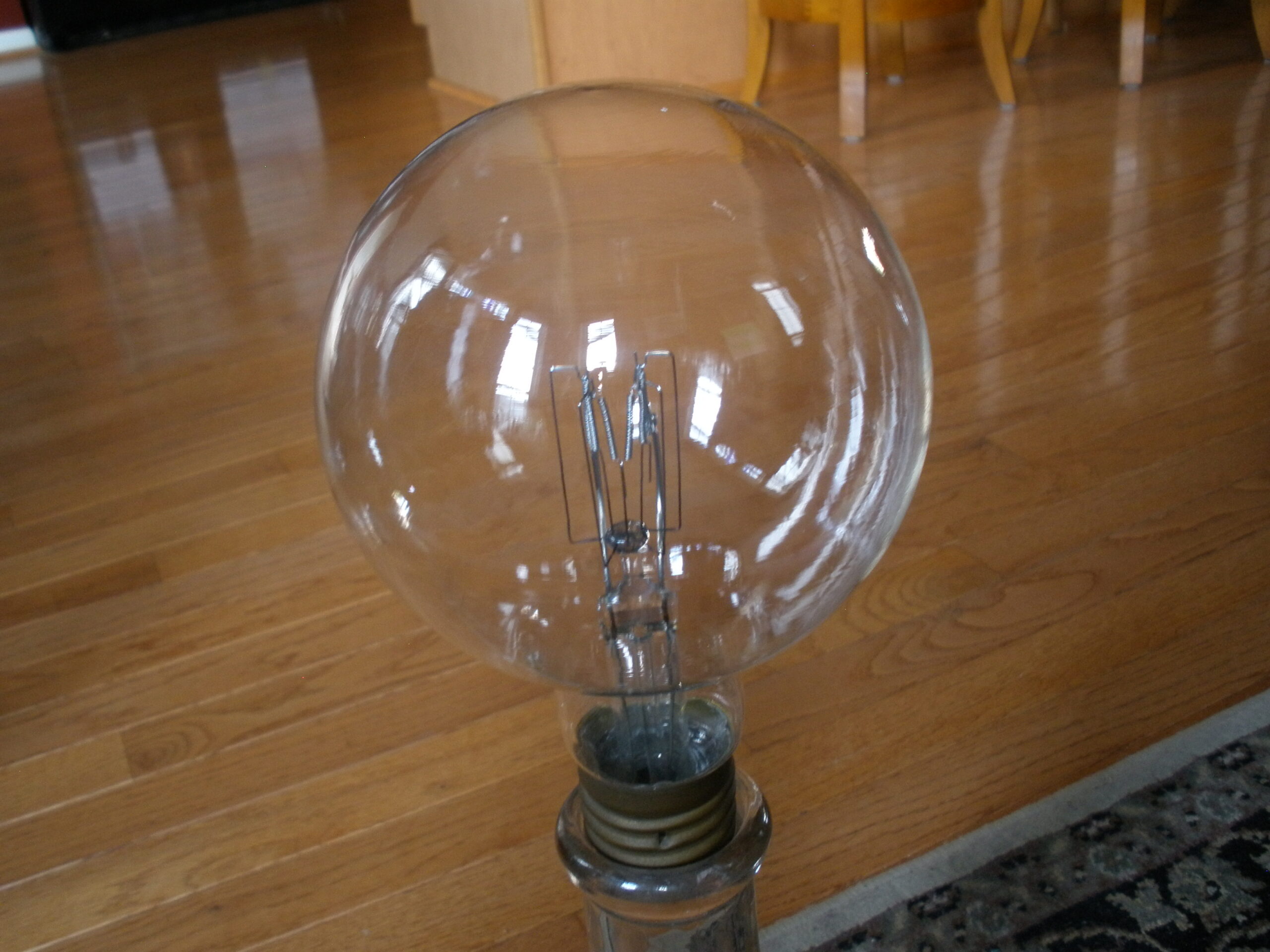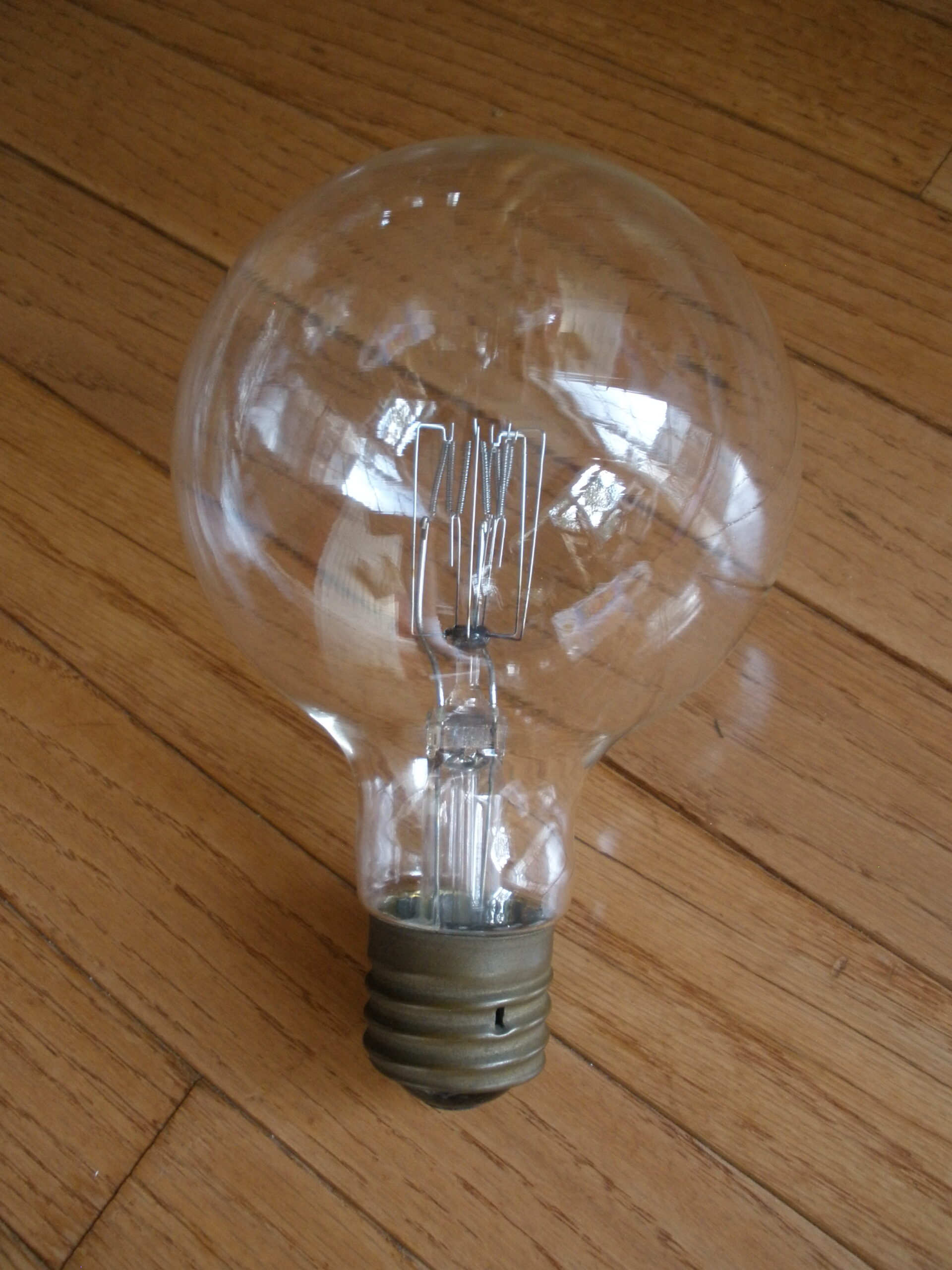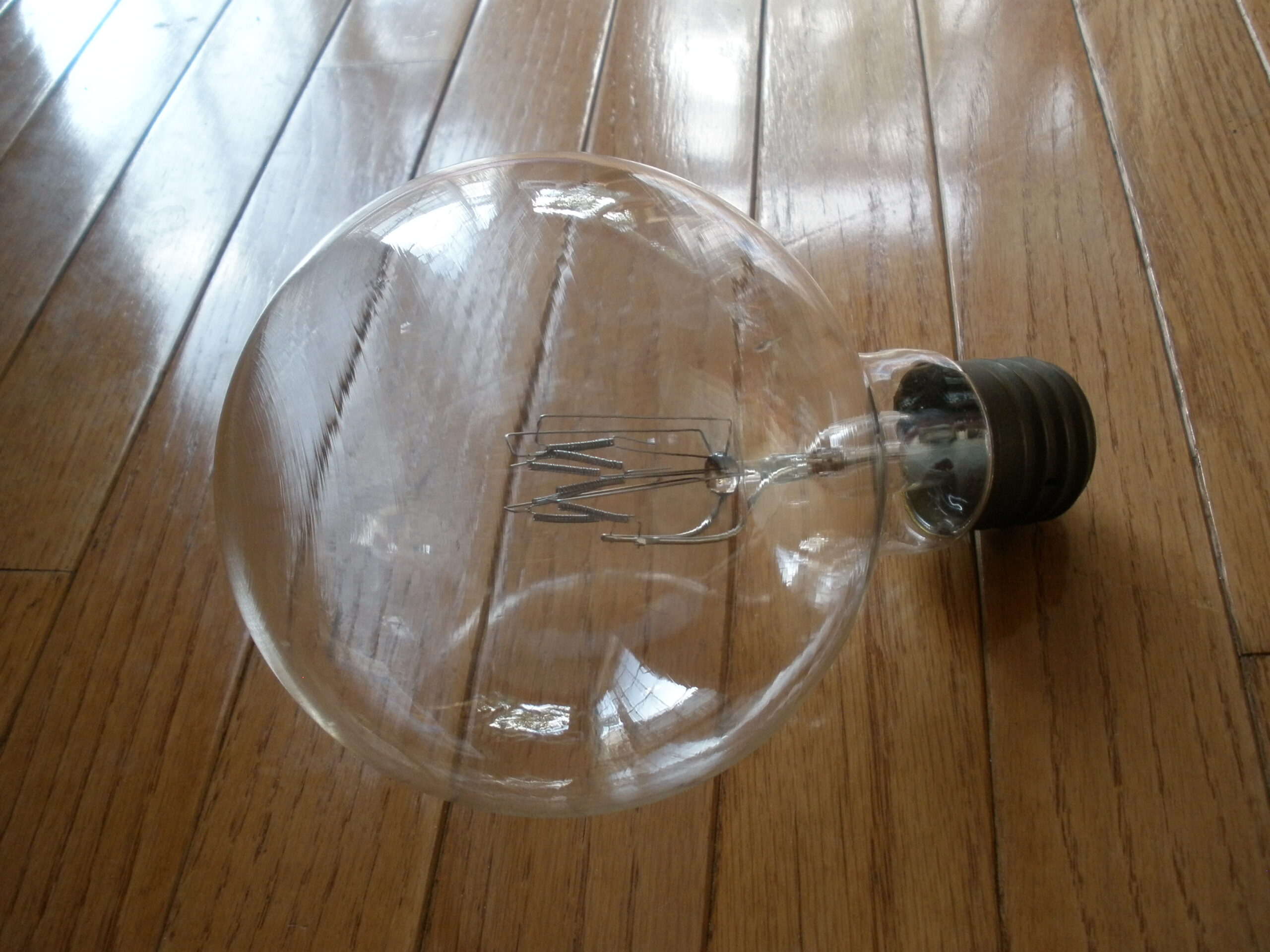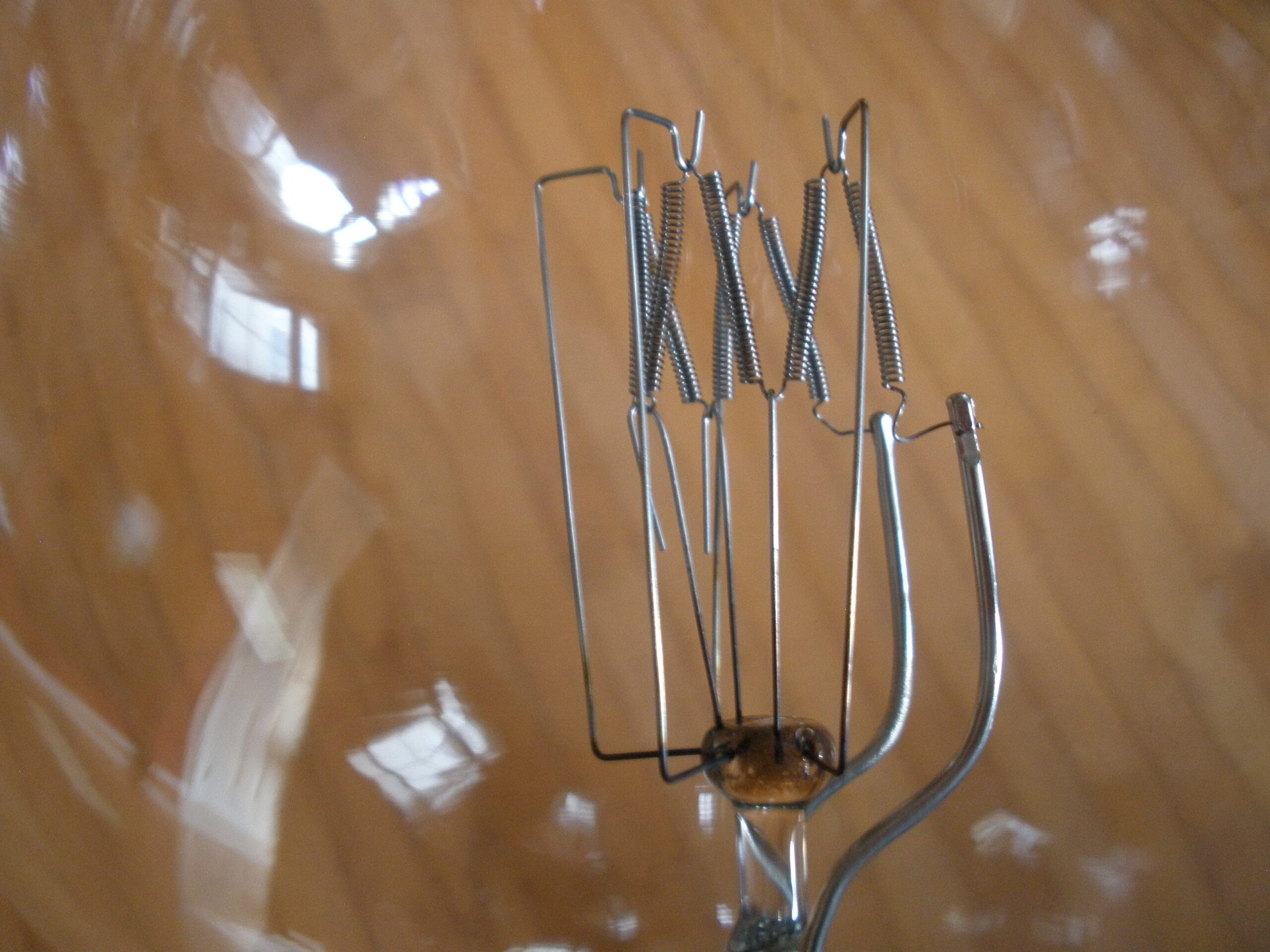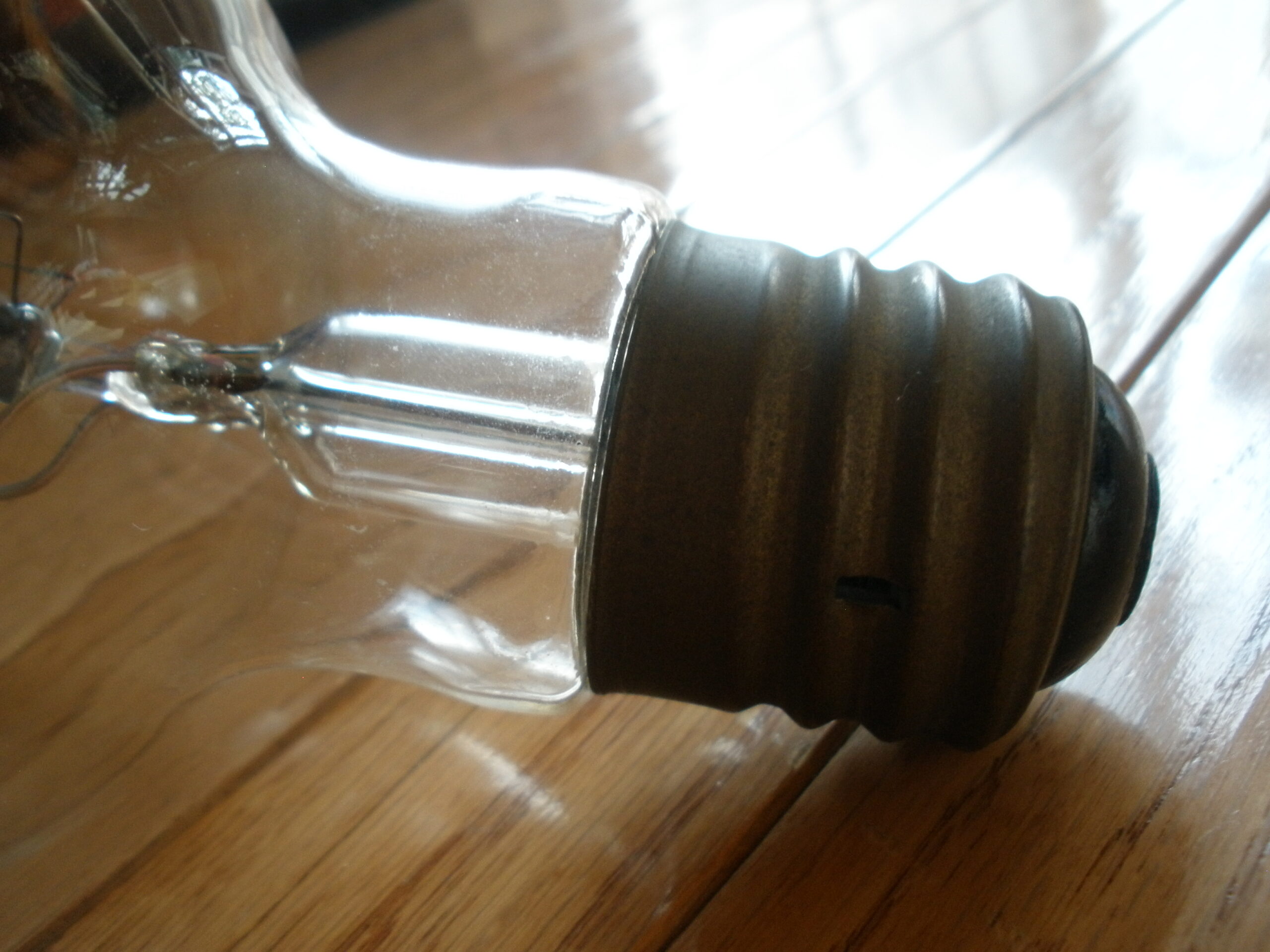For sale is a vintage large clear MOGUL BASE BALLON LIGHTBULB. Mogul base bulbs are much less common than medium base bulbs. This large clear glass bulb’s maker’s mark on top has mostly rubbed off. The bulb may be a high wattage mid-century General Electric bulb. The bulb’s filaments are all intact but Bulb is untested. This large balloon light bulb has a smooth top and measures 8 inches long and about 5 inches wide. The light can be screwed into a standard household medium base socket using a low cost medium to mogul socket adapter. This large bulb would definitely stand out on the right lamp.
Carbon filament bulbs were the first commercially viable electric light bulbs to hit the consumer market in 1882. In 1904, a tungsten filament was shown to be more efficient and longer lasting than the carbonized bamboo filament used previously. The introduction of a neutral gas to the glass envelope (or bulb) also helped to improve lifespan and brightness of the bulb. To produce enough light, these lamps required the use of extremely long filaments, and remained so until the development of more efficiently wound tungsten filaments.
Antique filament light bulbs, Edison light bulbs, and vintage light bulbs all refer to carbon- or early tungsten-filament lamps. Wound filament bulbs made popular by Edison Electric Light Company at the turn of the 20th century. They are easily identified by the long and complicated windings of their internal filaments, and by the very warm-yellow glow of the light they produce (many of the bulbs emit light at a color temperature of 2200-2400K).
In 1906, General Electric (GE) paid the inventors of this non-ductile tungsten lamp a sum total of $1.5 million dollars in order to secure the patent rights. GE registered the Mazda trademarked in 1909 for its incandescent tungsten filament light bulbs. The company chose the name due to its association with Ahura Mazda, the transcendental and universal God of Zoroastrianism whose name means light of wisdom in the Avestan language. The name was used from 1909 through 1945 in the United States by GE and Westinghouse. GE’s patents on the tungsten filament lamp expired in the late 1930s and other forms of lighting were becoming more important than incandescent bulbs. Tungsten-filament bulbs of the Mazda type were initially more costly than carbon filament bulbs, but used less electricity.

